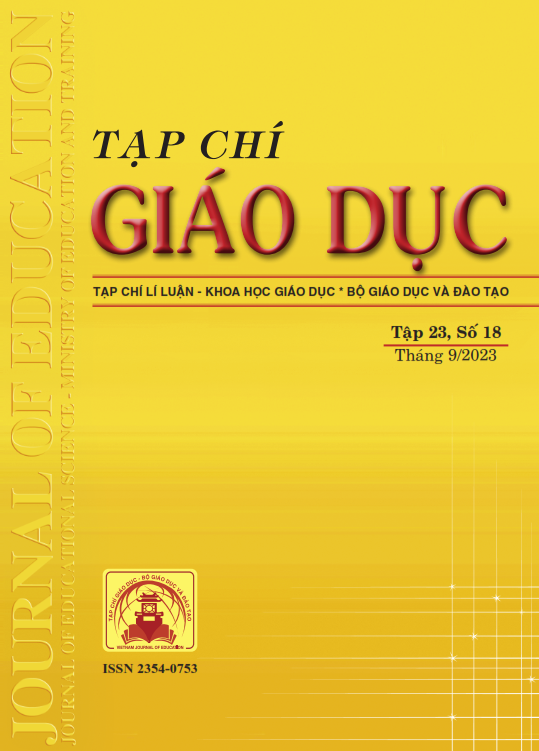Trải nghiệm của sinh viên ngành Giáo dục mầm non trong dạy học Toán cho trẻ theo phương pháp Montessori: nghiên cứu trường hợp tại Trường Cao đẳng Sư phạm Thừa Thiên Huế
Tóm tắt
Montessori is an educational method that helps children become independent, responsible citizens and enjoy learning in a natural way. So far, this is one of the educational methods that have overcome differences in natural conditions, territories, worldviews and religions to gain popularity all over the world. This study deploys an empirical research design aiming at examining the experiences of preschool students in teaching Mathematics for children according to the Montessori method. In the first phase of the study, 35 students majoring in Early Childhood Education participated in a training course on teaching mathematics to children according to the Montessori method. We then selected two students to directly teach math to children in a Montessori classroom. The initial research results show that students had very positive experiences with this educational method, which can be classified based on three aspects: preparing lesson plans, teaching materials, and children's learning. Accordingly, the researcher affirms the advantages and feasibility of the Montessori method in teaching Mathematics for preschool children.
Tài liệu tham khảo
Chen, Z. (1996). Children’s analogical problem solving: Effects of superficial, structural, and procedural similarity. Journal of Experimental Child Psychology, 62, 410-431.
DeLoache, J. S., Peralta de Mendoza, O. A., & Anderson, K. N. (1999). Multiple factors in early symbol use: Instructions, similarity, and age in understanding a symbol-referent relation. Cognitive Development, 14, 299-312.
Feez, S. (2010). Montessori and Early Childhood. SAGE Publications: London.
Fyfe, E. R., McNeil, N. M., Son, J. Y., & Goldstone, R. L. (2014). Concreteness fading in mathematics and science instruction: A systematic review. Educational Psychology Review, 26, 9-25.
Gentner, D., & Markman, A. (1997). Structure mapping in analogy and similarity. American Psychologist, 52, 45-56.
Key, K. (2020). Montessori Math Workbook: A Hands-On Approach to Early Mathematics. Primary Book 3.
Laski, E. V., Jor’dan, J. R., Daoust, C., & Murray, A. K. (2015). What Makes Mathematics Manipulatives Effective? Lessons From Cognitive Science and Montessori Education. SAGE Open, 5(2), 1-8. https://doi.org/10.1177/2158244015589588
Laski, E. V., Reeves, T., Ganley, C., & Mitchell, R. (2013). Mathematics teacher educators’ perceptions and use of cognitive psychology research. Mind, Brain, and Education, 7, 63-74.
Lillard, A. S. (2005). Montessori: The science behind the genius. New York, NY: Oxford University Press.
McNeil, N. M., & Jarvin, L. (2007). When theories don’t add up: Disentangling the manipulatives debate. Theory Into Practice, 46, 309-316.
Montessori, M. (2013). Trí tuệ thẩm thấu. NXB Lao động - Xã hội.
National Research Council (2009). Mathematics learning in early childhood: Paths toward excellence and equity. Washington, DC: The National Academies Press.
Tải xuống
Đã Xuất bản
Cách trích dẫn
Số
Chuyên mục
Giấy phép

Tác phẩm này được cấp phép theo Ghi nhận tác giả của Creative Commons Giấy phép quốc tế 4.0 .












